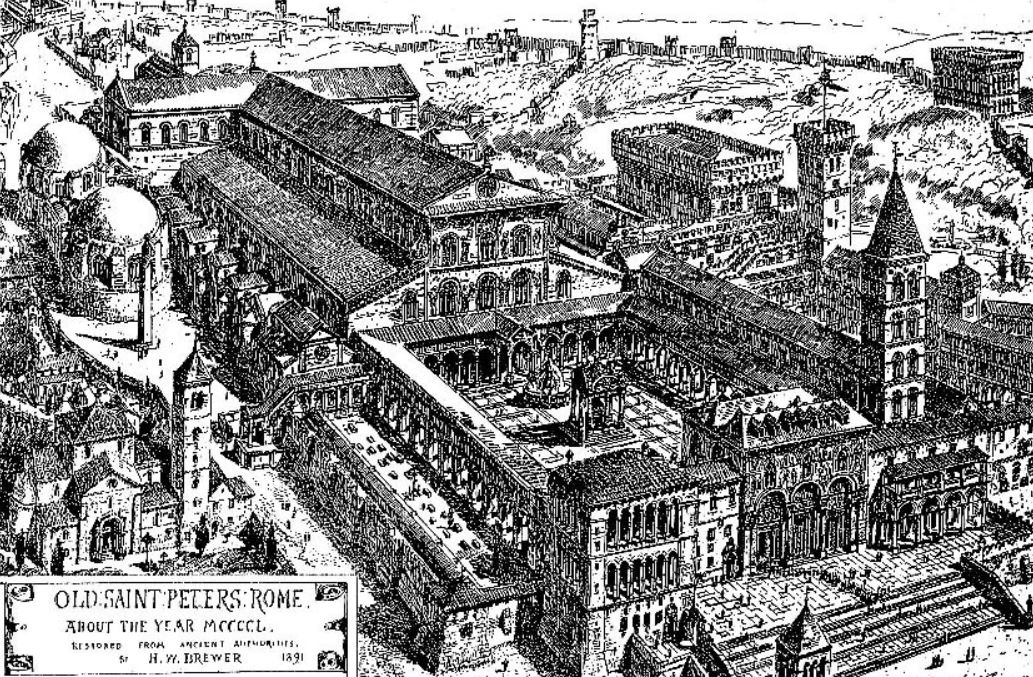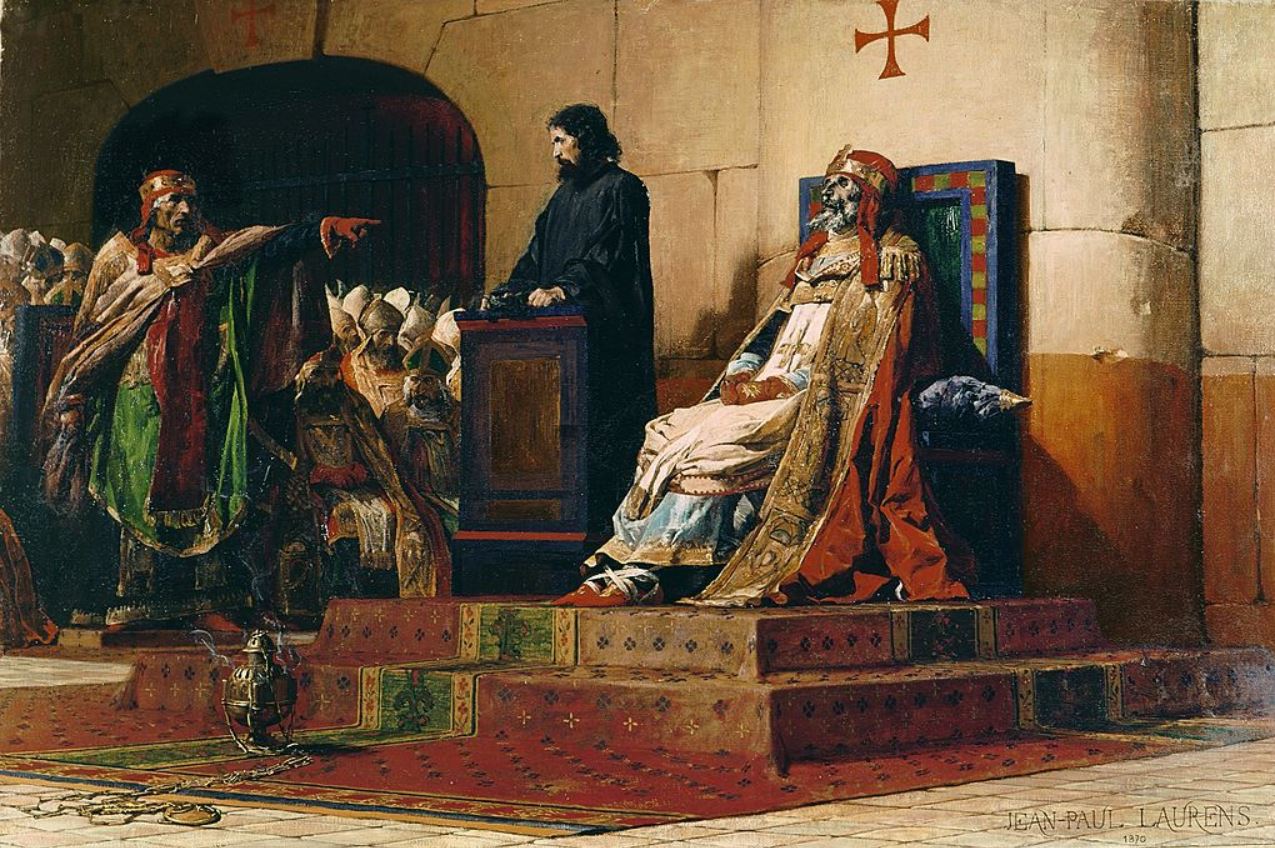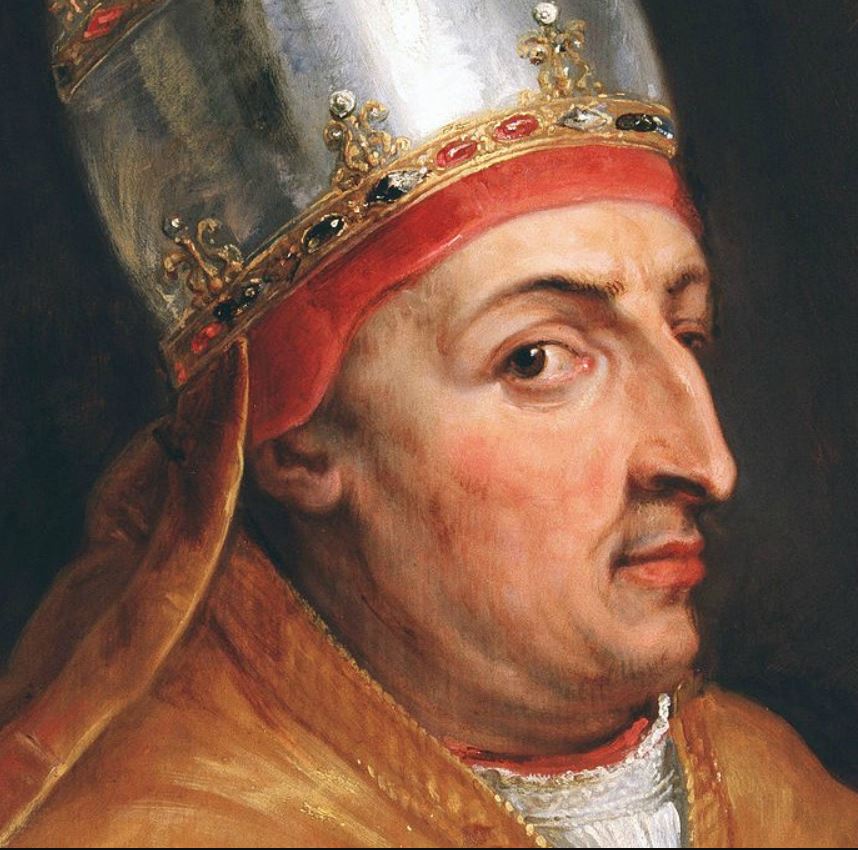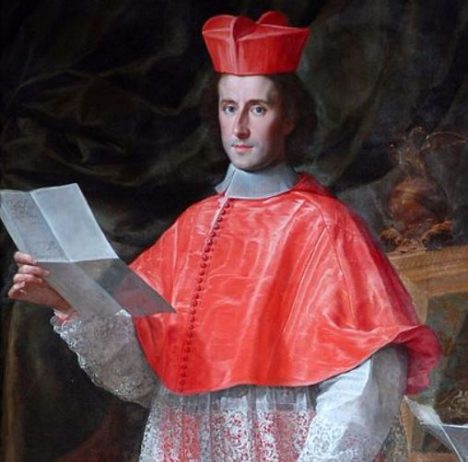


St. Peter’s Basilica (c. 1450)
Why Reform Was Needed
We have written stories on the major Protestant Reformers, as well as Pre-Protestant Reformers, to show how depraved Catholic Church leaders had become, and why the reformation was so necessary.
As this and other posts are read, keep in mind that Protestants are not innocent. Our divisiveness, with tens of thousands of denominations, is appalling. We have also had our share of sexual scandals, as well as persecution against other denominations and religions. Our objective in these posts is not to demonize Catholics. These posts are being used to point out that if we are to experience revival today, there is a high price that may need to be paid.
A Corrupt Church, or One without Spot or Wrinkle?
The New Testament shows that corruption, sin, and heresy were problems within the Church from the beginning. With the establishment of the Catholic Church, that corruption became profoundly enhanced. This led reformers to courageously speak out against that corruption, even at the risk of losing their lives.
List of Corrupt Practices
We will use this post to itemize some of the sins and practices of the Catholic Church to show how depraved it had become.
The Catholic Church Was more Political than Spiritual
The full papal title, for every pope:
His Holiness (Francis), Bishop of Rome, Vicar of Jesus Christ, Successor of the Prince of the Apostles, Supreme Pontiff of the Universal Church, Primate of Italy, Archbishop and Metropolitan of the Roman Province, Sovereign of the Vatican City State, Servant of the servants of God.
With “His Holiness” and the “Vicar of Christ” being part of the title of popes, we will show that these men were anything but “holy,” and they were not worthy of the title, “Vicar of Christ.”
Our list is but a random sampling of popes through the ages. More could have been included. It must be understood that these men were the head of the Catholic Church. With these individuals being the role models, imagine what type of lives those under them lived. This was the level of corruption and debauchery that the reformers were faced with.

Cadaver Synod: remains of Pope Formosus on right
► Pope Stephen VI (896 to 897)—Nine months after his predecessor, Pope Formosus, had died, he had his corpse dug up and placed on trial (Cadaver Synod). He found Formosus guilty of perjury and his body was tossed into the Tiber River.
► Pope John XII (955 to 964)—He turned his residence into a brothel. He committed adultery with numerous women, one being his niece.
► Pope Benedict IX (1032 and 1048)—He was described as “a demon from hell in the disguise of a priest.” He repeatedly stole and murdered, and even sold his title to his godfather for 1,500 pounds of gold. Writing about this man, Pope Victor III said,
his rapes, murders and other unspeakable acts of violence and sodomy. His life as a pope was so vile, so foul, so execrable, that I shudder to think of it.

Pope Boniface VIII: The pedophile without a conscience
► Pope Boniface VIII (1294 – 1303)—He said sleeping with boys was no more problematic than “rubbing one hand against the other.”
► Pope Sixtus IV (1471 – 1484)—He had an illegitimate child with his sister, as well as six other illegitimate children. He created a church tax on prostitutes and charged priests for having mistresses. He made six of his nephews cardinals.
► Pope Innocent VIII (1484 – 1492)—He acknowledged having eight illegitimate children, though he may have had more.
► Pope Alexander VI (1492 to 1503)—He bought his way into the papacy. He hosted an orgy in 1501 called the “Joust of Whores.” He had several mistresses and fathered at least nine illegitimate children.
► Pope Julius III (1550–1555)—He had a long homosexual affair with the Cardinal, Innocenzo Ciocci del Monte, causing a public scandal.
► Pope Paul IV (1555 – 1559)—He was best known for his horrific acts of anti-Semitism.
With these popes having such power, their corruption was unimaginable, and writers of that era titled the form of government they led as a “Pornocracy” or “Rule of the Harlots.”
Infallibility of the Pope and Infallibility of the Catholic Church
► Infallibility is one of the Catholic Church’s foundational doctrines, meaning that the pope’s utterances, and all that the Church does, are “incapable of error or failing.”
► This foundational doctrine was continually undermined through the behavior and actions of the popes themselves.
► Priests had made vows of celibacy. However, sexual lewdness was widespread among the clergy (a common problem yet today).
► Nuns who had made vows of celibacy were becoming pregnant and then sought abortions to hide their sin.

Cardinal Pietro Ottoboni was the
last “Cardinal-Nephew.”
In 1692 that office
was abolished.
Nepotism
Popes, cardinals, and priests were often found showing favoritism and positioning family members into seats of power within the Church, as well as within governments (cardinal-nephew).
Selling of Indulgences (Certificates/Permits) to Reduce Time Suffering in Purgatory
One Catholic teaching is that when a person dies they have to go to purgatory, a place of torment, to have their sins “purged.” The implication of this teaching is that the blood of Jesus is insufficient or lacking in power to perfectly purify. Claiming Jesus’ blood is imperfect, individuals are required to complete the work of “purging” remaining sins through personal suffering in purgatory.
Capitalizing on this superstition, the popes developed an elaborate scheme to raise finances. They would issue indulgences in exchange for money or for joining a crusade. The indulgences were sold whenever finances were needed to fund the construction of a cathedral or to finance a war.
People buying these indulgences believed that it was effectual in reducing the amount of time one would need to spend in purgatory. The Catholic Church even sold permits for people who were already dead, for the hope that departed loved ones would also achieve a quicker release from purgatory.
Skull of the Catholic St. Ivo of Kermartin: Venerated by Catholics
Veneration and Adoration of the Remains of Deceased Saints
The Catholic Church officially sanctions the veneration of relics. These are objects that, supposedly, are remains from people in Christian history who were said to have lived holy lives. These objects from the deceased could include:
► Skulls, limbs, hair, clothing, or objects they wore
► Dirt from their graves
► Splinters from Jesus’ cross
► Letters they wrote
► Tears of Jesus
► A twig from Moses’ burning bush
► Straw from the manger in which Jesus laid
► Milk from Mary’s breasts
► Foreskin of Jesus (there were 12 of them circulating in churches across Europe during the Middle ages)
Money was paid in order to venerate these relics and thus escape years in purgatory.
Objects like these were often kept as an amulet or talisman. People were told that if they paid to see, or better yet, owned these relics, they would become holier through the object’s inherent power.
Relics were another source of income for the Church and its corrupt clergy. It was common for clergy to sell fake splinters of Christ’s cross, a saint’s finger or toe, a vial of water from the Holy Land, or any number of objects which would supposedly bring luck or ward off misfortune.
Buy Relics on ebay
Money is still being made off these objects: You can find relics for sale on ebay with this link.
Pilgrimages (Religious Tourism)
Pilgrimages were another source of income for the Catholic Church. The Church encouraged journeys to “holy sites” to see the relics of the saints, because there was a profit to be had from it. People’s ignorance and superstition were preyed upon, as they assumed there would be greater spiritual merit for them having made such a visit.
Simony and Expectations—Lucrative Business
Simony is a word used for the sale of positions in the Catholic Church. The more prestigious the position, the higher the cost, and the seat went to the highest bidder.
In addition to clandestine sales for positions within the Catholic Church, there were also those out in the open, referred to as “Expectations.” These were letters that could be purchased guaranteeing the buyer that when a particular person holding office in a church died, they would be the next in line for that position. With the middle ages having short life expectancy, it was common for each church position to have between four to ten expectations sold—a great generator of revenue!
Bible Translation and Authority
► The Catholic Church does not hold the Bible as being the ultimate authority. The Church allows for their doctrines and tradition (similar to the Pharisees) to have equal standing.
► Because Catholics prohibited the Bible from being translated into the language of the people, and the only one being available was in Latin, most people couldn’t read it–even most of the priests. As a result, many priests were biblically illiterate and uneducated regarding the Scriptures.
► The popes held people in ignorance of God’s word and preyed upon their illiteracy to keep them bound to superstitious fears. They used the threat of excommunication and eternal damnation to those who would translate the Bible into the language of the common people.
The Lord’s Supper
The Catholic Church’s doctrine of transubstantiation, which is what takes place at every Mass, is a mystical practice that supposedly turns the wafer and wine into the literal body and blood of Jesus Christ. Reformers strongly objected to this and it was a major point of debate.
Infant Baptism
Reformers saw no spiritual merit in infant baptism because baptism is a sign of one’s repentance. If an infant does not have the cognitive ability to repent, the baptism had no meaning.
Justification Is by Faith
The Catholic Church teaches that the seven sacraments are “efficacious signs of grace.” The reformers, however, taught that a person is made right in God’s sight by faith, not in the performance of any ritual.
Only One Mediator between God and Man
Reformers taught that all of God’s people were priests (1 Peter 2:9), and that the practice of confession for the absolution of sins was blasphemous, because only God has the power to forgive sins.
► The reformers also taught that prayers to the dead, whether it be Mary or any of those the Catholics have titled as “saints,” were also blasphemous, and that it was equivalent to necromancy.
Brief List
The above are just some of the topics that caused the reformers to risk life, family, and property in their pursuit of a Reformation of the Church of Jesus Christ. What price are you willing to pay to see personal revival, revival in your church, and revival in your community?
Sources
► Eight of the Worst Popes in Church History by Drew Kann
► Five Centuries of Religion by G. G. Coulton
► Heresy and the Decline of the Medieval Church by Gordon Leff
► Medieval Studies: Infant Perdition in Middle Ages by G. G. Coulton
► The Decline of the Medieval Church by A.C. Flick
Return to List of Revival Stories
Chet & Phyllis Swearingen
Office: (260) 920-8248
romans1015@outlook.com
Beautiful Feet
P.O. Box 915
Auburn, IN 46706


